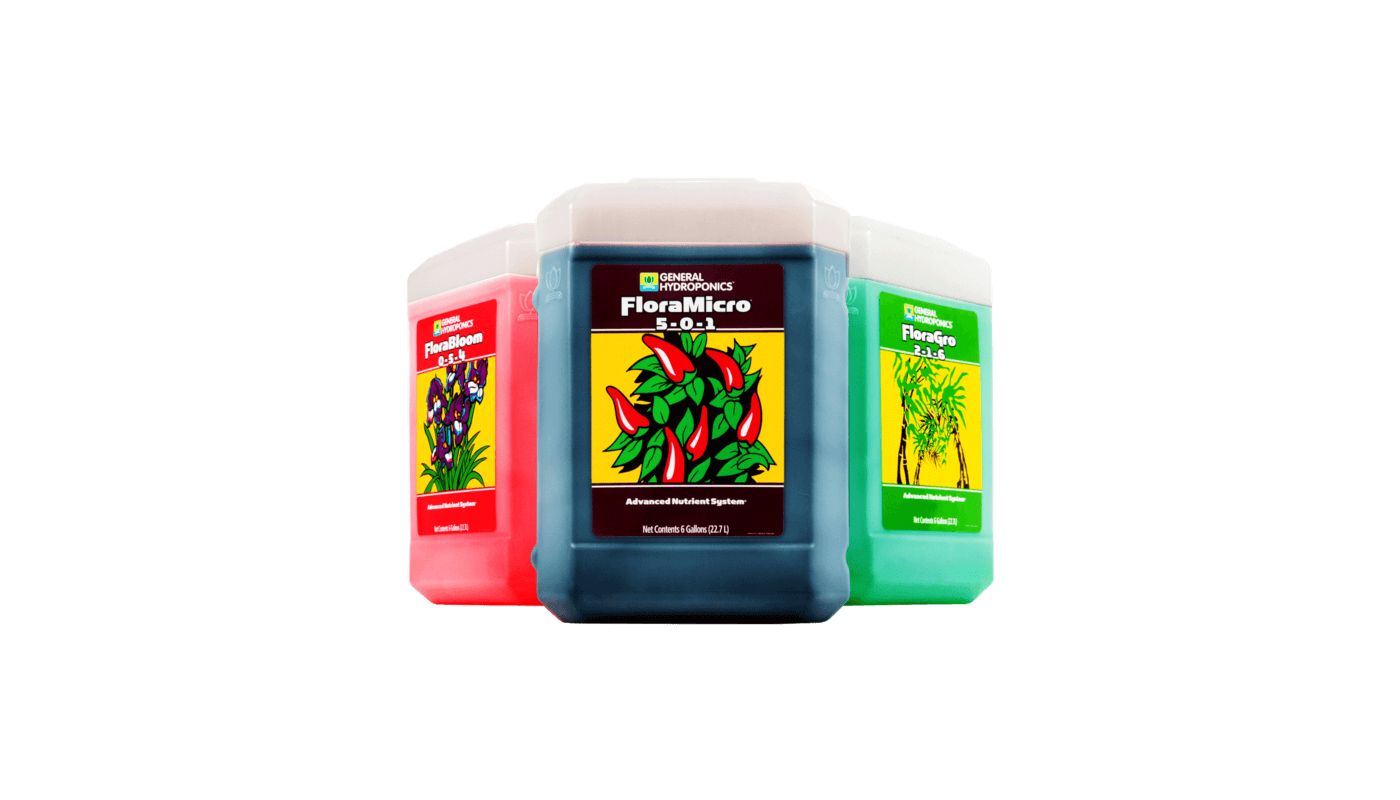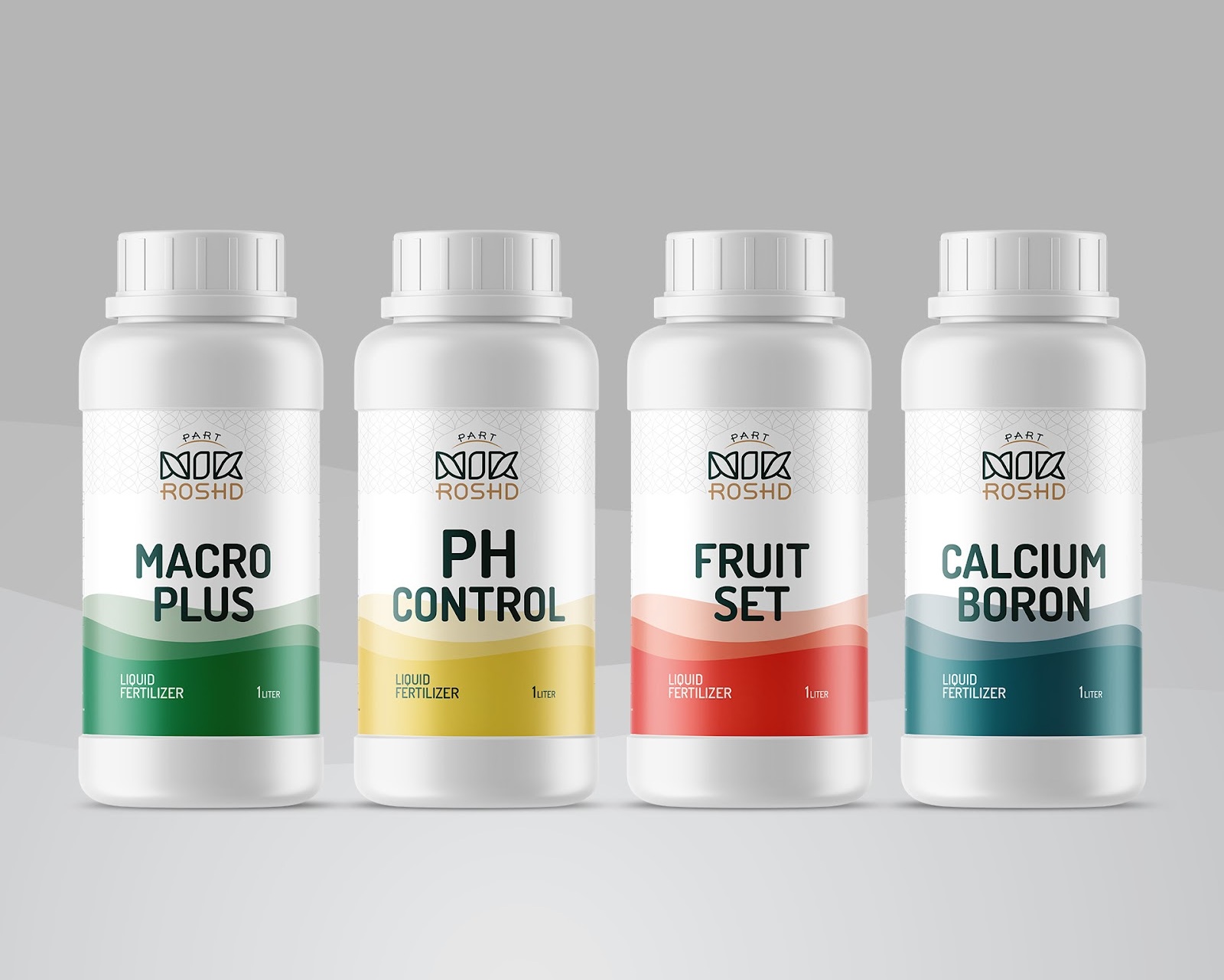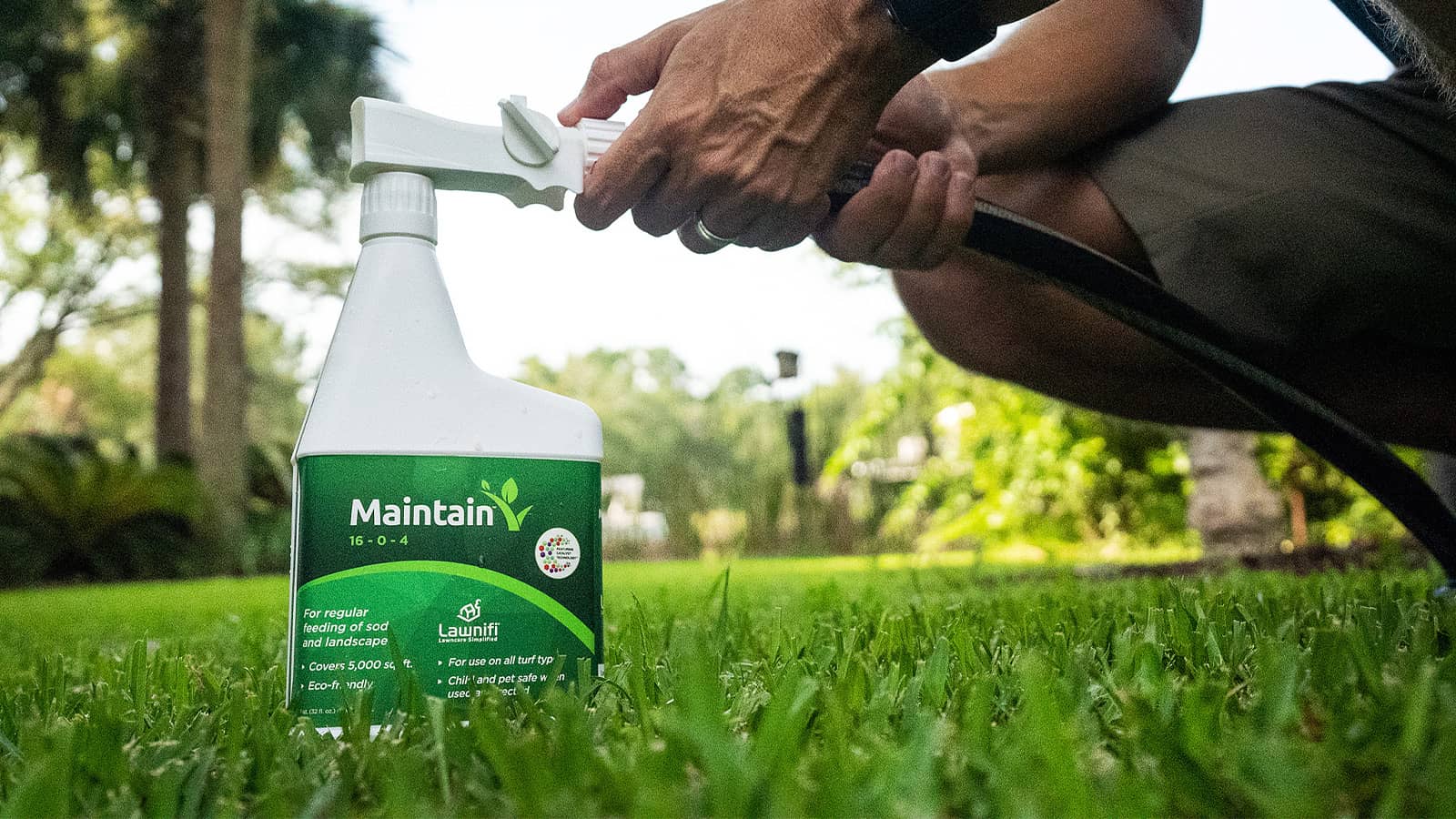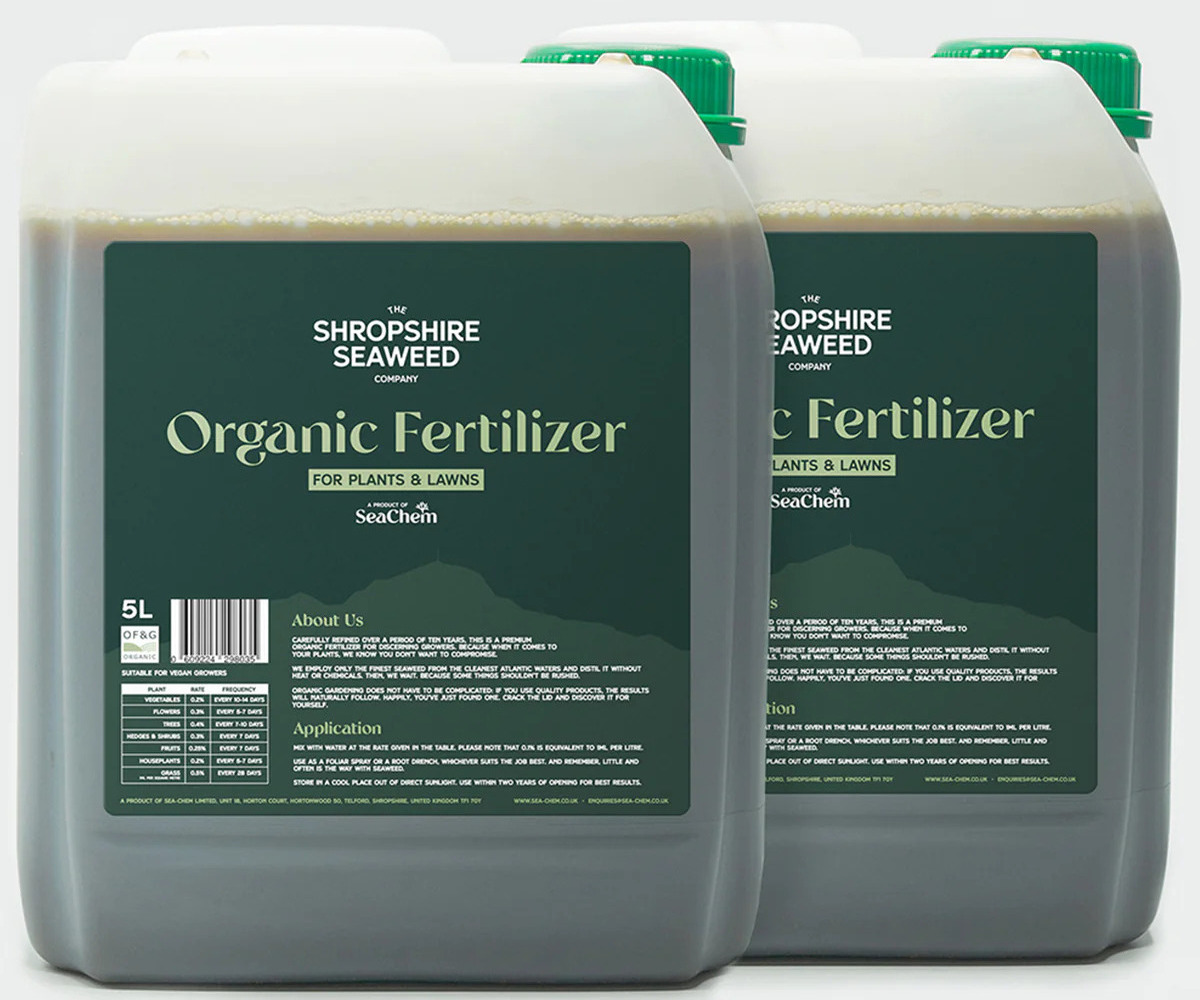Home>Gardening Techniques>DIY Projects>Best Liquid Fertilizer For Plants


DIY Projects
Best Liquid Fertilizer For Plants
Modified: January 22, 2024
Discover the best DIY projects for liquid fertilizer. Find out how to create your own organic liquid fertilizer for your garden and plants.
(Many of the links in this article redirect to a specific reviewed product. Your purchase of these products through affiliate links helps to generate commission for Chicagolandgardening.com, at no extra cost. Learn more)
Table of Contents
- Introduction
- Benefits of Liquid Fertilizer
- Factors to Consider when Choosing Liquid Fertilizer
- Nitrogen-Based Liquid Fertilizers
- Phosphorus-Based Liquid Fertilizers
- Potassium-Based Liquid Fertilizers
- Micronutrient-Based Liquid Fertilizers
- Organic Liquid Fertilizers
- Synthetic Liquid Fertilizers
- Comparing Liquid Fertilizer Types
- Conclusion
Introduction
When it comes to gardening and agriculture, fertilizers play a crucial role in promoting healthy plant growth and maximizing yield. Among the various types of fertilizers available, liquid fertilizers have gained popularity due to their convenience and effectiveness.
Liquid fertilizers are concentrated nutrient solutions that can be easily dissolved in water and applied directly to the soil or foliage of plants. Unlike granular or powdered fertilizers, liquid fertilizers provide immediate nutrient absorption, allowing plants to quickly access the essential elements necessary for their development.
One of the major benefits of liquid fertilizers is their ability to deliver a precise and targeted nutrient application. By adjusting the concentration of the fertilizer solution, gardeners and farmers can easily customize the nutrient ratio to meet the specific needs of different plants or crops. This ensures that the plants receive the right balance of nutrients for optimal growth and productivity.
Additionally, liquid fertilizers are highly soluble and quickly absorbed by the plant’s root system, resulting in faster nutrient uptake. This rapid absorption not only saves time but also reduces the risk of nutrient leaching or runoff, promoting better nutrient utilization and minimizing environmental impact.
Another advantage of liquid fertilizers is their versatility in application methods. They can be applied through various irrigation systems, such as drip irrigation, foliar spraying, or fertigation. This flexibility allows for efficient and targeted nutrient delivery, even in hard-to-reach areas or during specific growth stages of plants.
Furthermore, liquid fertilizers can be easily combined with other fertilizers or plant protection products, such as pesticides or growth regulators, creating a convenient and cost-effective way to address multiple plant needs simultaneously.
With the increasing demand for organic and sustainable gardening practices, many liquid fertilizers are now available in organic formulations. These organic liquid fertilizers are derived from natural sources, such as animal by-products, compost, or seaweed extracts. They provide a valuable alternative for those seeking to promote soil health, reduce chemical inputs, and support environmentally friendly cultivation methods.
In the following sections, we will explore the different types of liquid fertilizers available and discuss their specific advantages and considerations. Whether you are a gardening enthusiast or a professional farmer, understanding the diverse options of liquid fertilizers will help you make informed decisions and achieve the best results for your plants.
Benefits of Liquid Fertilizer
Liquid fertilizers offer numerous benefits that make them a popular choice among gardeners and farmers. Let’s explore some of these advantages:
- Quick and Efficient Nutrient Absorption: Liquid fertilizers are easily absorbed by plant roots, allowing for faster nutrient uptake. This aids in the rapid and effective delivery of essential nutrients, promoting healthy plant growth and development.
- Precise Nutrient Application: With liquid fertilizers, it is easier to adjust the concentration of nutrients to meet the specific needs of different plants or crops. Gardeners and farmers can tailor the fertilizer solution to provide the ideal nutrient ratio, ensuring that plants receive the correct amount of nutrients for optimal growth and productivity.
- Improved Nutrient Utilization: The high solubility of liquid fertilizers enhances nutrient availability and utilization. These fertilizers can be fine-tuned to provide nutrients in a form that is readily accessible to plants, reducing the risk of nutrient leaching and runoff. As a result, plants can efficiently utilize the nutrients, minimizing waste and promoting overall nutrient efficiency.
- Convenient Application Methods: Liquid fertilizers can be applied through various irrigation systems, including foliar spraying, drip irrigation, or fertigation. This versatility allows for precise and efficient nutrient delivery, even in challenging terrain or during specific growth stages. Additionally, liquid fertilizers can be easily mixed with other products, such as pesticides or growth regulators, allowing for convenient combined applications.
- Improved Soil Health: Liquid fertilizers can enhance soil fertility and structure when used correctly. They contribute to the enrichment of soil microorganisms and promote biological activity, leading to improved soil health over time. This, in turn, supports better plant nutrient uptake and overall plant vigor.
- Organic Options: Many liquid fertilizers are now available in organic formulations, providing a sustainable and environmentally friendly alternative. These organic fertilizers derive their nutrients from natural sources, such as compost, animal by-products, or seaweed extracts. They are widely used by organic gardeners and are effective in nourishing plants while minimizing the use of synthetic chemicals.
The benefits of liquid fertilizers make them a versatile and practical choice for a wide range of gardening and agricultural applications. By harnessing their quick absorption, precise application, and convenience, gardeners and farmers can effectively meet the nutritional needs of their plants, promote optimal growth, and achieve bountiful yields.
Factors to Consider when Choosing Liquid Fertilizer
Choosing the right liquid fertilizer is essential for achieving optimal plant growth and maximizing crop yield. Consider the following factors when selecting a liquid fertilizer:
- Plant Nutritional Requirements: Different plants have specific nutritional needs. Before choosing a liquid fertilizer, identify the specific nutrient requirements of your plants. Understanding the macronutrients (nitrogen, phosphorus, and potassium) and micronutrients (iron, zinc, manganese, etc.) needed by your plants will help you select a fertilizer with the appropriate nutrient composition.
- Nutrient Ratios: Fertilizers come in various ratios of macronutrients, represented by the N-P-K (nitrogen-phosphorus-potassium) numbers on the label. These ratios indicate the percentages of each nutrient in the fertilizer. Evaluate the nutrient ratios based on your plant’s specific requirements to ensure that the fertilizer meets their nutritional needs.
- Application Method: Consider the application method that best suits your gardening or farming practices. For example, if you prefer foliar spraying, choose a liquid fertilizer that is specifically formulated for foliar application. Similarly, if you use drip irrigation, select a fertilizer that can be applied through this method. Matching the fertilizer to your preferred application method will optimize nutrient delivery to the plants.
- Soil pH and Composition: Assess the pH and composition of your soil, as it can impact nutrient availability. Some liquid fertilizers are formulated for specific soil types or pH levels. If your soil is acidic or alkaline, choose a fertilizer that can help balance the pH and correct any nutrient deficiencies associated with your soil type.
- Environmental Considerations: Be mindful of environmental factors and regulations when choosing a liquid fertilizer. Consider the potential impact of the fertilizer on the surrounding ecosystem, especially if you are near water bodies or sensitive habitats. Opt for fertilizers that have minimal leaching potential and minimal environmental impact.
- Organic vs. Synthetic: Decide whether to use organic or synthetic liquid fertilizers. Organic fertilizers are derived from natural sources and are often favored by those adhering to organic gardening practices. Synthetic fertilizers, on the other hand, contain chemically synthesized nutrients. Both have their advantages and disadvantages, so weigh the pros and cons based on your personal preference and gardening goals.
By considering these factors, you can select a liquid fertilizer that aligns with your specific plant requirements, application methods, and environmental considerations. Remember, choosing the right fertilizer is crucial for ensuring healthy plant growth, improving soil fertility, and ultimately achieving successful gardening or farming outcomes.
Nitrogen-Based Liquid Fertilizers
Nitrogen is an essential nutrient for plant growth and development. It plays a vital role in promoting leafy green growth, enhancing chlorophyll production, and supporting overall plant vigor. Nitrogen-based liquid fertilizers are specifically formulated to provide plants with readily available nitrogen in a form that can be quickly absorbed.
One common type of nitrogen-based liquid fertilizer is ammonium nitrate. It has a high nitrogen content and is easily soluble in water, making it suitable for foliar applications or fertigation. Ammonium nitrate provides a fast-acting nitrogen source that promotes rapid growth and green foliage. However, it is essential to handle it with care due to its explosive nature in concentrated form.
Another nitrogen-based liquid fertilizer is urea. Urea is a neutral pH fertilizer that contains a high concentration of nitrogen. It is widely used in agriculture due to its affordability and effectiveness in providing a controlled-release nitrogen source. Urea is suitable for a variety of crops and can be applied through irrigation systems or as a foliar spray.
Nitrogen-based liquid fertilizers are particularly beneficial for plants that require a boost in vegetative growth, such as leafy greens, grasses, and crops grown for their foliage. However, it is important to note that excessive nitrogen application can lead to imbalanced plant growth and reduce fruit or flower production. Therefore, it is crucial to follow recommended application rates and consider the specific needs of your plants when using nitrogen-based liquid fertilizers.
When selecting a nitrogen-based liquid fertilizer, consider the nitrogen content, the release rate, and the specific formulation. Some fertilizers may include additional nutrients or additives to enhance nutrient availability or improve plant uptake. Read the labels carefully to understand the composition and choose a fertilizer that aligns with your plant’s requirements and growth stage.
Overall, nitrogen-based liquid fertilizers are effective tools for promoting vigorous plant growth and greening, making them a popular choice for many gardeners and farmers. By providing readily available nitrogen in a form that can be easily absorbed, these fertilizers support healthy foliage development and contribute to overall plant vitality.
Phosphorus-Based Liquid Fertilizers
Phosphorus is a vital nutrient for plant growth and development, playing a crucial role in root development, flowering, and fruit production. Phosphorus-based liquid fertilizers are specifically formulated to provide plants with readily available phosphorus in a form that can be easily absorbed.
One common type of phosphorus-based liquid fertilizer is diammonium phosphate (DAP). DAP is a highly soluble fertilizer that contains phosphorus and nitrogen. It is widely used in agriculture to promote root growth and early plant development. DAP is suitable for various crops and can be applied through drip irrigation or foliar spraying.
Another phosphorus-based liquid fertilizer is monopotassium phosphate (MKP). MKP provides plants with a balanced combination of phosphorus and potassium, making it ideal for promoting blooming, fruiting, and overall plant health. MKP is often used in hydroponic systems or as a foliar spray due to its high solubility and quick absorption by plants.
Phosphorus-based liquid fertilizers are particularly beneficial for plants that require a boost in root development, flowering, or fruit set, such as fruit-bearing trees, flowering plants, and root crops. However, excessive phosphorus application can lead to nutrient imbalances or environmental concerns, so it is important to adhere to recommended application rates and consider soil testing to determine the specific needs of your plants.
When selecting a phosphorus-based liquid fertilizer, consider the phosphorus content, the additional nutrients it may contain, and the specific formulation. Some fertilizers may include trace elements or organic compounds to enhance nutrient availability or improve plant uptake. Read the labels carefully to understand the composition and choose a fertilizer that aligns with your plant’s requirements and growth stage.
It is worth noting that phosphorus availability can be influenced by soil pH levels. In alkaline soils, phosphorus might become less accessible to plants, requiring the use of acidifying agents or specialized formulations to enhance phosphorus availability. Additionally, phosphorus can be prone to leaching in sandy soils, necessitating careful application and management.
Total phosphorus management is crucial for sustainable agriculture and to prevent environmental issues. Properly managing the use of phosphorus-based liquid fertilizers ensures efficient nutrient utilization and minimizes the risk of phosphorus runoff into water bodies.
Overall, phosphorus-based liquid fertilizers are valuable tools for promoting root development, flowering, and fruit production in plants. By providing readily available phosphorus, these fertilizers support robust plant growth, enhance flowering and fruiting processes, and contribute to overall plant health and productivity.
Potassium-Based Liquid Fertilizers
Potassium is an essential nutrient for plant growth and plays a vital role in various physiological processes, including water and nutrient uptake, enzyme activation, and photosynthesis. Potassium-based liquid fertilizers are specifically formulated to provide plants with readily available potassium in a form that can be easily absorbed.
One common type of potassium-based liquid fertilizer is potassium nitrate. Potassium nitrate is highly soluble and contains both potassium and nitrogen. It is widely used in agriculture to promote overall plant health, improve fruit quality, and increase crop yield. Potassium nitrate is suitable for various crops and can be applied through irrigation systems or as a foliar spray.
Another potassium-based liquid fertilizer is potassium sulfate. Potassium sulfate provides plants with potassium in a sulfate form, which is particularly effective for crops grown in soils with high pH. It can improve fruit quality, enhance drought tolerance, and contribute to disease resistance. Potassium sulfate is commonly used in horticulture and can be applied through drip irrigation or foliar spraying.
Potassium-based liquid fertilizers are particularly beneficial for plants that require a boost in potassium levels, such as fruit-bearing trees, flowering plants, and crops grown for their fruits or tubers. Potassium plays a crucial role in fruit enlargement, enhancing flavor and color, and supporting plant stress tolerance. However, excessive potassium application can disrupt nutrient balance and may hinder the uptake of other essential nutrients, so it is important to follow recommended application rates and consider soil testing to determine the specific needs of your plants.
When selecting a potassium-based liquid fertilizer, consider the potassium content, the additional nutrients it may contain, and the specific formulation. Some fertilizers may include micronutrients or organic compounds to enhance nutrient availability or improve plant uptake. Read the labels carefully to understand the composition and choose a fertilizer that aligns with your plant’s requirements and growth stage.
It is worth noting that potassium availability can be influenced by soil pH levels. In acidic soils, potassium may become less accessible to plants, requiring soil pH adjustments or specialized formulations to enhance potassium availability. Additionally, potassium can be leached from sandy soils or prone to fixation in clay soils, necessitating proper management and application techniques.
Total potassium management is essential for maintaining plant health, enhancing crop quality, and maximizing yield. Properly managing the use of potassium-based liquid fertilizers ensures efficient nutrient utilization, supports plant stress tolerance, and contributes to elevated crop production.
Overall, potassium-based liquid fertilizers are valuable tools for promoting plant health, improving fruit quality, and increasing crop yield. By providing readily available potassium in a form that can be easily absorbed, these fertilizers support various physiological processes, enhance crop performance, and contribute to the overall productivity of plants.
Micronutrient-Based Liquid Fertilizers
In addition to macronutrients like nitrogen, phosphorus, and potassium, plants also require trace amounts of micronutrients for optimal growth and development. Micronutrients include essential elements like iron, zinc, copper, manganese, boron, molybdenum, and chlorine. Micronutrient-based liquid fertilizers are specifically formulated to provide plants with these essential micronutrients in a readily available form.
Micronutrient deficiencies can cause significant growth and yield limitations in plants. Symptoms of micronutrient deficiencies often manifest as yellowing or discoloration of leaves, stunted growth, or reduced flowering and fruiting. Micronutrient-based liquid fertilizers play a crucial role in correcting these deficiencies and supporting healthy plant growth.
One common type of micronutrient-based liquid fertilizer is chelated micronutrients. Chelated micronutrients are formulated using compounds that bind the micronutrients and protect them from being tied up in the soil, making them more available for plant uptake. These fertilizers are often used as foliar sprays or fertigation solutions, allowing for easy and efficient application.
Another type of micronutrient-based liquid fertilizer is seaweed extract. Seaweed extract is derived from marine plants and is rich in various micronutrients along with other beneficial compounds like auxins, cytokinins, and amino acids. Apart from supplying micronutrients, seaweed extract can also enhance plant growth, stimulate root development, and improve stress tolerance in plants.
Micronutrient-based liquid fertilizers are particularly beneficial for crops that are prone to micronutrient deficiencies or have specific micronutrient requirements, such as certain fruit crops, leafy greens, or plants grown in alkaline or nutrient-deficient soils. However, it is important to use micronutrient-based liquid fertilizers judiciously and avoid over-application, as excessive micronutrient levels can be toxic to plants.
When selecting a micronutrient-based liquid fertilizer, consider the specific micronutrient needs of your plants, the concentration and formulation of the product, and the recommended application rates. It is advisable to conduct soil tests or plant tissue analysis to identify specific micronutrient deficiencies and tailor the fertilizer application accordingly.
Proper application timing is also essential when using micronutrient-based liquid fertilizers. Some micronutrients are more effective when applied during specific growth stages or in response to specific plant needs. Understanding the growth patterns and nutrient requirements of your plants will help you determine the optimal timing for applying micronutrient-based liquid fertilizers.
Overall, micronutrient-based liquid fertilizers are valuable tools for addressing micronutrient deficiencies and promoting healthy plant growth. By providing readily available micronutrients, these fertilizers support essential plant functions, enhance overall plant health, and contribute to the success of a variety of crops.
Organic Liquid Fertilizers
Organic gardening practices are gaining popularity as people increasingly prioritize sustainability and environmental stewardship. Organic liquid fertilizers offer a natural and eco-friendly solution for nourishing plants while minimizing the use of synthetic chemicals. These fertilizers are derived from organic sources and are designed to provide plants with essential nutrients in a readily available form.
One common type of organic liquid fertilizer is compost tea. Compost tea is made by steeping compost or composted materials in water. This brewing process allows beneficial microorganisms and nutrients to be extracted into the liquid. Compost tea provides a rich blend of macronutrients, micronutrients, and beneficial soil microorganisms that support plant growth, improve soil fertility, and enhance disease resistance.
Another organic liquid fertilizer is fish emulsion. Fish emulsion is created by processing fish parts or whole fish into a concentrated liquid. It is a rich source of nitrogen, phosphorus, and trace elements. Fish emulsion offers a balanced nutrient supply and is particularly beneficial for promoting green growth and overall plant vigor. It can be applied through drip irrigation, foliar spraying, or as a soil drench.
Seaweed extract is another popular organic liquid fertilizer. It is derived from various types of seaweed or kelp and is rich in trace elements, plant hormones, and other beneficial compounds. Seaweed extract helps stimulate root growth, enhance nutrient uptake, improve stress tolerance, and boost overall plant health. It can be applied as a foliar spray or through fertigation.
Organic liquid fertilizers offer numerous advantages. They enrich the soil with organic matter and improve soil structure, moisture retention, and microbial activity. Furthermore, these fertilizers promote long-term soil health, as they contribute to the buildup of organic matter and the improvement of nutrient cycling in the soil ecosystem.
When using organic liquid fertilizers, it is important to follow the recommended application rates and frequency to avoid nutrient imbalances or over-fertilization. Organic fertilizers typically have lower nutrient concentrations compared to synthetic fertilizers, so it may be necessary to apply them more frequently during the growing season.
Organic liquid fertilizers are a suitable choice for organic gardeners, eco-conscious individuals, and those looking to minimize their environmental impact. However, it is important to note that they may have a milder and slower nutrient release compared to synthetic fertilizers. Patience and consistency are key when using organic liquid fertilizers to ensure continuous nutrient availability and promote sustained plant growth.
Overall, organic liquid fertilizers provide a natural and sustainable option for nourishing plants, improving soil health, and supporting environmentally friendly gardening practices. By harnessing the benefits of organic matter and natural nutrient sources, these fertilizers contribute to healthier plants, higher yields, and a more resilient and sustainable gardening or farming system.
Synthetic Liquid Fertilizers
Synthetic liquid fertilizers, also known as chemical or inorganic fertilizers, are manufactured through chemical processes to provide plants with specific nutrients in a concentrated and readily available form. These fertilizers are widely used in modern agriculture and gardening practices due to their convenience, precision, and efficiency in delivering nutrients to plants.
One of the advantages of synthetic liquid fertilizers is their ability to provide precise nutrient ratios. The composition of these fertilizers can be tailored to meet the specific nutrient requirements of different plants or crops. This allows for targeted nutrient delivery, ensuring that plants receive the optimal balance of macronutrients and micronutrients for their growth and development.
Synthetic liquid fertilizers also offer rapid nutrient availability. The nutrients in these fertilizers are quickly absorbed by plant roots or foliage, resulting in fast nutrient uptake and immediate plant response. This can be particularly beneficial when addressing nutrient deficiencies or promoting rapid growth during critical stages of plant development.
Another advantage of synthetic liquid fertilizers is their high nutrient concentration. Compared to organic fertilizers, synthetic fertilizers generally have higher nutrient content, which means that smaller application volumes are needed to achieve the desired nutrient levels. This can reduce storage requirements and logistical challenges associated with handling larger quantities of fertilizer.
Furthermore, synthetic liquid fertilizers allow for easy and convenient application methods. They can be applied through various irrigation systems, such as drip irrigation or fertigation, as well as through foliar spraying. This flexibility enables efficient and targeted nutrient delivery to plants, ensuring that nutrients reach the plants’ roots or leaves where they are needed most.
It is important to note that synthetic liquid fertilizers should be used with caution. Over-application can lead to nutrient imbalances, environmental pollution, and potential harm to plants. Hence, it is crucial to follow recommended application rates, avoid excessive use, and conduct regular soil testing to monitor nutrient levels and adjust fertilizer usage accordingly.
While synthetic liquid fertilizers provide immediate nutrient availability, they may not contribute to long-term soil health or organic matter build-up as organic fertilizers do. To maintain soil fertility and improve soil structure, organic amendments and practices should be incorporated in conjunction with synthetic fertilizers.
Overall, synthetic liquid fertilizers offer a practical and efficient solution for delivering precise and readily available nutrients to plants. They are widely used in conventional agriculture, commercial horticulture, and high-yield crop production. However, proper application and responsible management are key to ensure effective nutrient utilization, minimize environmental impact, and support sustainable plant growth.
Comparing Liquid Fertilizer Types
When considering liquid fertilizers for your plants, it is essential to compare the different types available to determine the most suitable option. Let’s compare and contrast some key aspects of liquid fertilizer types:
- Nutrient Availability: Synthetic liquid fertilizers tend to provide nutrients in a quickly available form, allowing for rapid plant uptake. Organic liquid fertilizers, on the other hand, release nutrients slowly as they break down, providing a more sustained nutrient supply.
- Nutrient Composition: Synthetic liquid fertilizers can be customized to specific nutrient ratios, offering precise control over nutrient delivery. Organic liquid fertilizers generally have lower nutrient concentrations but provide additional organic matter and beneficial substances that can improve soil health.
- Environmental Impact: Organic liquid fertilizers are generally more environmentally friendly as they are derived from natural sources and reduce the risk of chemical runoff and pollution. However, many synthetic liquid fertilizers have undergone substantial improvements to minimize environmental concerns.
- Application Methods: Both organic and synthetic liquid fertilizers can be applied through various irrigation systems, allowing for efficient and targeted nutrient delivery. However, some organic fertilizers may require more frequent applications due to their lower nutrient concentrations.
- Cost: Organic liquid fertilizers often require more volume for the same nutrient concentration compared to synthetic fertilizers, making them relatively more expensive. However, synthetic fertilizers may require additional supplementation of organic matter or soil amendments for long-term soil health.
- Nutrient Specificity: Synthetic fertilizers allow for precise nutrient targeting, enabling customization based on specific crop or plant needs. Organic fertilizers, while providing a range of nutrients, may not offer the same level of nutrient specificity as synthetic options.
- Sustainability: Organic liquid fertilizers align with sustainable gardening practices by promoting soil health, reducing chemical inputs, and supporting natural nutrient cycling. However, well-managed synthetic liquid fertilizers can also be sustainable when used judiciously and in conjunction with organic soil amendments.
When comparing liquid fertilizer types, it is important to consider the specific requirements of your plants, your gardening or farming practices, as well as your environmental and sustainability goals. Both organic and synthetic fertilizers offer unique advantages and considerations, and the optimal choice may vary depending on your specific needs.
Ultimately, finding the right balance between organic and synthetic liquid fertilizers, as well as incorporating other sustainable practices, such as crop rotation and soil conservation measures, can create a holistic and environmentally conscious approach to nourishing your plants and cultivating a thriving garden or farm.
Conclusion
Fertilizers are an essential tool for promoting healthy plant growth and maximizing crop yields. Among the various types of fertilizers available, liquid fertilizers have gained popularity due to their convenience, effectiveness, and versatility in application methods. Whether you opt for nitrogen-based, phosphorus-based, potassium-based, micronutrient-based, organic, or synthetic liquid fertilizers, each type offers unique benefits and considerations.
Liquid fertilizers provide readily available nutrients that can be quickly absorbed by plant roots or foliage, ensuring efficient nutrient uptake and utilization. They can be adjusted to meet the specific nutrient requirements of different plants, promoting optimal growth and productivity. Moreover, liquid fertilizers offer precise nutrient application, allowing for targeted nutrient delivery and reducing the risk of nutrient leaching or runoff.
When choosing a liquid fertilizer, it is important to consider factors such as plant nutritional requirements, nutrient ratios, application methods, soil pH, and environmental considerations. These factors will help determine the most suitable fertilizer type for your plants and cultivation practices.
While synthetic liquid fertilizers provide precise nutrient control and rapid availability, organic liquid fertilizers offer a natural and sustainable option that improves soil health and reduces environmental impact. Both types can be used effectively, either exclusively or in combination, to achieve desired plant nutrition and growth.
It is important to note that proper application rates, timing, and responsible management are crucial for all types of liquid fertilizers. Over-application can lead to nutrient imbalances, environmental pollution, and potential harm to plants. Conducting soil tests, monitoring plant health, and adjusting fertilization practices accordingly will ensure effective use of liquid fertilizers and promote sustainable gardening or farming practices.
By choosing the right liquid fertilizer and implementing proper fertilization practices, you can support the healthy growth of your plants, maximize crop yields, and contribute to a flourishing garden or farm. Remember to consider the specific needs of your plants, stay informed about the different fertilizer options available, and adapt your approach based on your goals and environmental considerations.









